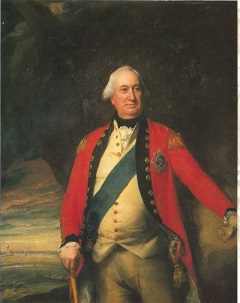The March to Germantown

After the Paoli Massacre, something akin to a chess game ensued, but with Howe and the British controlling the board. The British army moved to Valley Forge which forced Washington to protect either Philadelphia or his supply base at Reading — he could not protect both. Washington chose to protect Reading which allowed the British a clear path to the capital.
Once it became clear that Philadelphia was in grave danger of falling to the British, a panic gripped the city. Rumors that the British would burn, pillage, and plunder galloped along the streets. Patriots moved out, businesses closed down, and the Liberty Bell was removed to Allentown for safekeeping.
On September 26, Lord Cornwallis led a resplendent procession of Grenadiers, Dragoons, and artillery into Philadelphia.
When word reached Benjamin Franklin in Paris that Philadelphia had fallen to the British, the wise statesman rhetorically asked, "Howe has Philadelphia, or does Philadelphia have Howe?" Franklin recognized that occupying Philadelphia would pose a major logistical nightmare.
Of the residents who remained in Philadelphia, some were hopeful, some scared, and all wondered what would happen. Though the Tory sympathizers greeted Cornwallis with "acclamations," many would soon be displaced from their houses and all would be forced to pay exorbitant prices for food.
Meanwhile, Washington, humiliated that the British had taken the capital, but buoyed by the performance of his troops at Brandywine, prepared a major offensive. His target was Germantown, a village five miles north of Philadelphia. Howe had posted the bulk of the British army there because the British Commander in Chief thought it was a safe spot to keep an eye on Washington. He was wrong.




